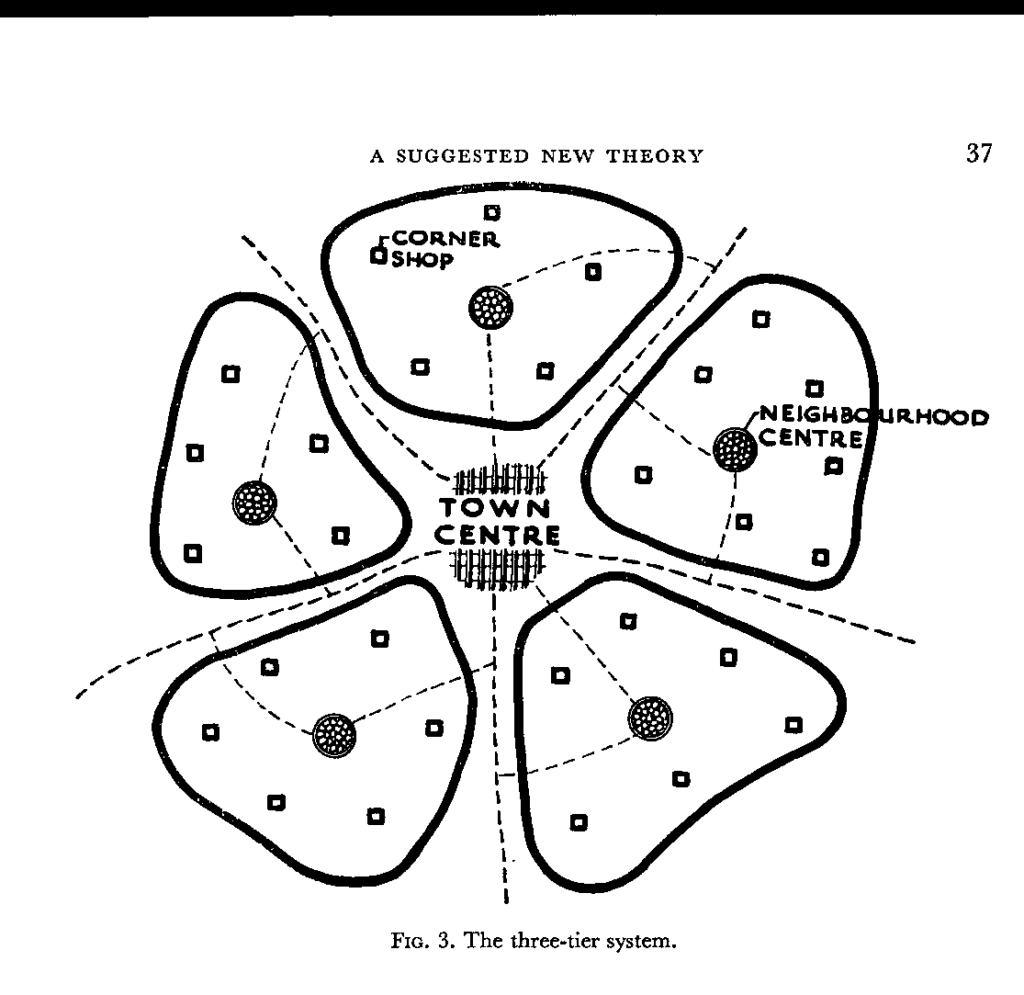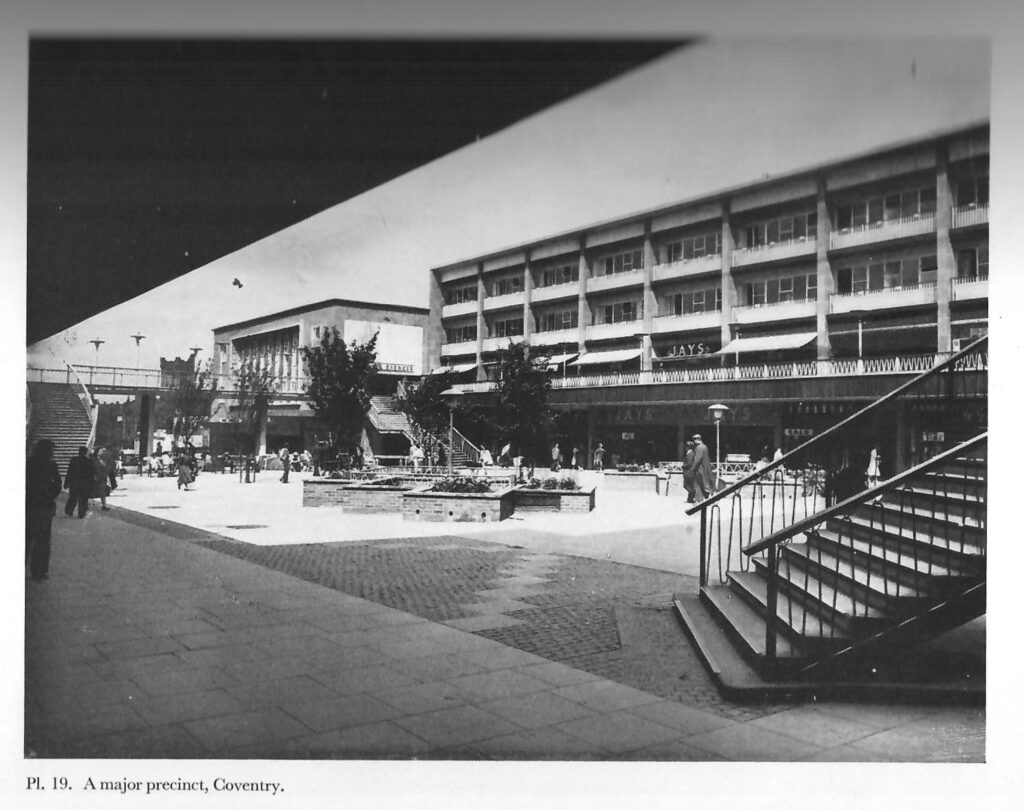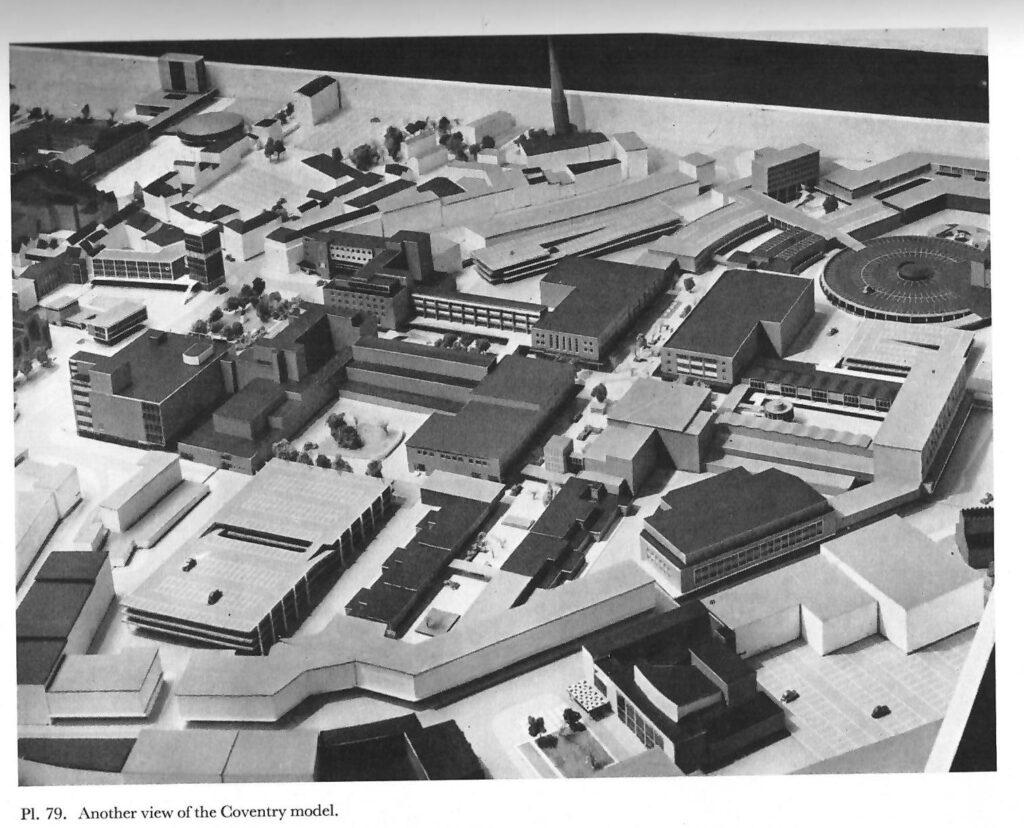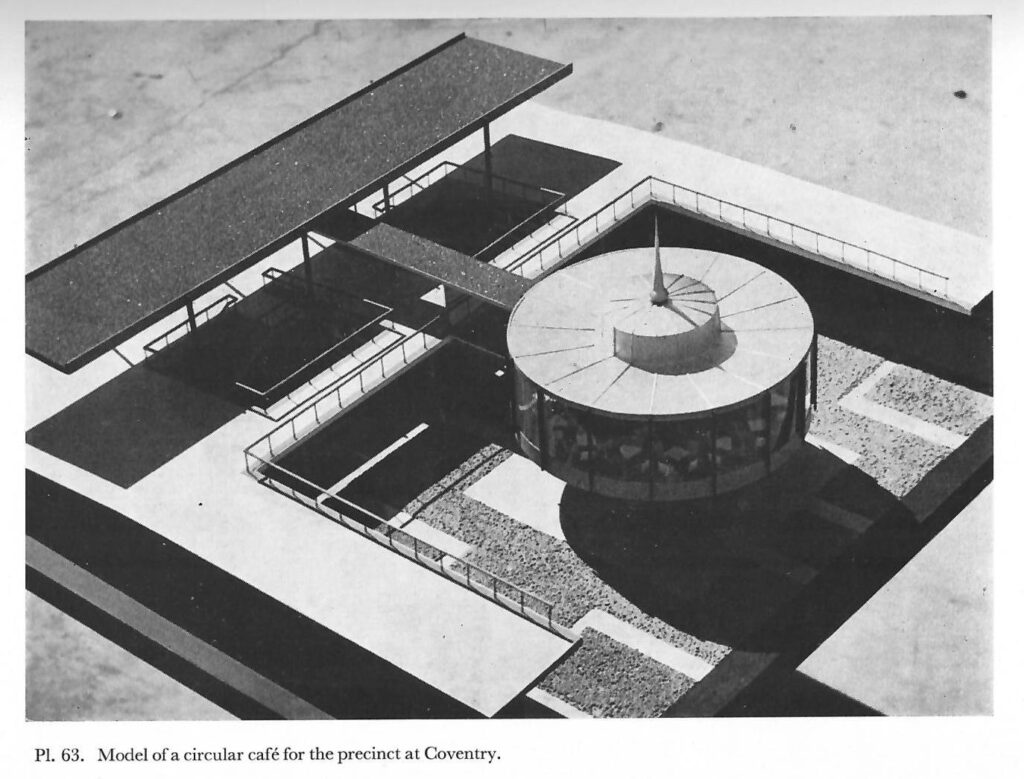
British Town Centres: New Trends in Layout and Distribution. Leonard Hill (Books) Ltd. 1959
British Town Centres was a book published in 1959 by Wilfred Burns, who learned his trade in Coventry during the post-war reconstruction of the city.
The book was an important contribution to town planning in the post-war years. Before this book the planning of shopping provision was at best an ad hoc and unscientific affair. Decisions were made on a hunch and rule of thumb basis.
The book sought to bring a more scientific approach to the planning of retail development. It traces the history of retailing, back to the earliest ages, and describes the changes that were taking place in retailing in modern times – the development of supermarkets and catalogue selling.
Sir Wilfred Burns (1923 – 1984) was a key figure in British Town Planning. He worked in Leeds City Council before moving to Coventry in 1949 to join Donald Gibson’s energetic team of architects and planners. After Coventry he had a period at Surrey Council before becoming the Chief Planning Officer of Newcastle City Council in 1960.
At Newcastle, he took charge of a newly created department—one of the first planning departments in the country—and worked closely with the city council’s political leader, T. Dan Smith.
In 1968, Burns was appointed as chief planner at the Ministry of Housing and Local Government, becoming Deputy Secretary at the Department of the Environment (DoE) in 1971, with responsibility for integrating national land use and transport planning policy.
Burns wrote British Shopping Centres shortly after he left Coventry, using the city for many examples in the book.
One of the new initiatives mentioned in the book was a “sociological survey of Coventry”. This was commissioned by the Council in 1950 and carried out by the University of Birmingham. For the very first time, residents of a district in the city were interviewed and asked about what they purchased and where they purchased it. The survey also tried to understand the reasons for people’s shopping choices.
At the time of the survey most people purchased everyday groceries from local isolated shops and most everyday shopping was done within ten minutes’ walk from home.
Interestingly, how well known the name of the store was important for furniture stores, but not so for clothing shops. It was noted however, that there were few “good class” clothing shops in the city.
The book proposed that a three-tier structure of retailing be used in planning. The upper tier would be the city centre, then large suburban centres of 100 – 150 shops serving a population of 20,000 – 40,000. Thirdly, scattered corner shops.

Burns developed an approach to retail planning, which started with calculating how much people spent on shopping in different categories. This was used to calculate the total amount of expenditure on different items.
The turnover per square foot of floorspace was then calculated for the different categories of expenditure and from this it was possible to calculate the amount of shopping that needed to be provided in each level in the hierarchy. This is essentially what still happens today, but now using much more sophisticated modelling.
The book also looked at the design aspects of shopping centres. Drawing on his Coventry experience, Burns was a keen proponent of the pedestrian shopping precinct. “It is in fact, the only sensible plan on which to base designs for shopping centres in the future, whether they be town centres or major suburban centres.”
He describes the history of pedestrian shopping streets and there were many examples that preceded Coventry. However, Coventry was perhaps the first example of large scale pedestrianisation in this country. The book includes lots of images of contemporary shopping precincts around Europe.
Burns was also a proponent of canopies and arcaded walkways that gave protection from the weather. He felt that where shoppers are spending longer periods of time, such as town centres, they should be provided with protection against both bad weather and sunshine. This, of course, characterized the post-war development of Coventry City Centre and has grown in importance with global warming. Unfortunately, the current civic authorities have forgotten this lesson and are less committed to providing and protecting our canopies and arcaded walkways.


Amusingly, the author thought that the sociological importance of the local shop where people would meet and gossip with their neighbours would hold back the development of self-service shopping. “…. shopping in this country, and no doubt in others, is not for many women one of those chores to be done as quickly and easily as possible. Shopping is more than buying an article, and it is difficult to see any substantial alteration in this state of affairs …. We can, I feel, safely assume that the development of self-service will not affect seriously our plans for the foreseeable future even in respect of the large centres.”
He went on to add “Finally, in the same vein we can, I believe, safely ignore the possibility of big changes in the popularity and extent of postal shopping.”
The book didn’t predict the huge changes in society, with women working and people having more money, but less time.
In the sixty years since the book was published, the world of retailing has changed enormously. Initially we had the growth of self-service shopping, which led to the decline of local shops. This was followed by the growth of out-of-town shopping centres, which hollowed out the retail offering of town centres. Latterly the growth of online shopping has impacted across the retail offering.
But this book was an important statement of its time and it includes a wonderful selection of black and white photographs of post-war shopping developments, many of which are from Coventry.

